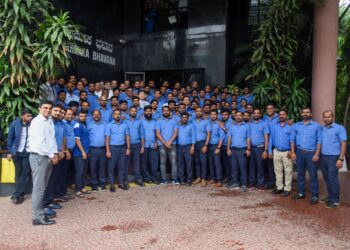India celebrates National Space Day on 23 August, commemorating the successful landing of its third lunar mission, Chandrayaan-3, on the moon. This momentous achievement is not just a feather in the cap for the Indian Space Research Organisation (ISRO) but also a glowing testament to India’s scientific prowess and ambition. Recognized both nationally and internationally, the success of Chandrayaan-3 places India in an elite league of nations capable of interstellar missions.
Overcoming the Odds: A Saga of Resilience and Expertise
The success of Chandrayaan-3 didn’t come easy; it was a result of the meticulous planning, relentless hard work, and indefatigable spirit of scientists and engineers at ISRO. In particular, the mission faced a litany of challenges, most notably a technical glitch that necessitated an emergency landing. The ISRO team’s ability to troubleshoot in real-time and ensure a successful landing is a masterclass in crisis management and technological expertise. This mission not only reached the moon but also elevated ISRO’s standing in the world of aerospace.
Fuelling Aspirations and Forging the Future
Chandrayaan-3’s landing has served as a catalyst in boosting India’s space capabilities, solidifying its status as a formidable player in space exploration. Beyond its immediate scientific impact, the mission also operates as a beacon, motivating the next generation of Indian youths to consider careers in science, technology, engineering, and mathematics (STEM). The feat achieved by ISRO is not only a technological marvel but also a cultural milestone that fosters an environment where scientific curiosity and pursuit of knowledge are celebrated.
Beyond Celebration: Contemplating the Infinite Possibilities
National Space Day is not just a day of celebration but also a day for reflection. It encourages us to think about the broader implications of space exploration for humanity. The benefits extend far beyond national pride or technological mastery. Space exploration has the potential to catalyze advancements in various fields, from healthcare and transportation to energy and environmental sustainability. It offers insights into cosmic phenomena, which in turn might provide answers to questions we have yet to ask. It underscores the fact that our quest for knowledge and discovery is far from over; it’s just reaching new heights—literally.
Also Read: Chandrayaan-3 Is Ready To Create History, Check Landing Date, Time, And More
Acknowledging the Heroes and Nurturing the Next
As we celebrate National Space Day, it’s crucial that we extend our gratitude to the countless scientists, engineers, and support staff who have dedicated their lives to pushing the boundaries of what’s possible. Their untiring efforts have not only made space exploration a reality but also opened doors to new avenues of scientific inquiry. At the same time, this is a moment to invest in the future—by encouraging the youth of today to become the scientists and explorers of tomorrow. We must create platforms and initiatives that nurture their innate curiosity and arm them with the skills they need to succeed in a progressively complex and interconnected world.
More Than Just a Milestone, A Vision for the Future
The triumphant landing of Chandrayaan-3 serves as a landmark moment for India’s space program, a feat that fills every Indian with immense pride. However, National Space Day should serve as more than just an annual celebration of this milestone; it should be a catalyst for continuous innovation and growth in the field of space exploration. As we look skyward, it’s time also to look forward—to a future where the realms of possibility are only bound by the extent of our imagination and the reach of our collective will.
Also Read:
- 15 Interesting Facts About The Moon’s Distance From Earth: Understanding And Exploring
- Essay On ‘Scientific Leadership Of India’ For Students
- Essay On ‘Chandrayaan-3: India’s Third Lunar Mission’ For Students
- Essay On ISRO: India’s Pride In Space For Students




















